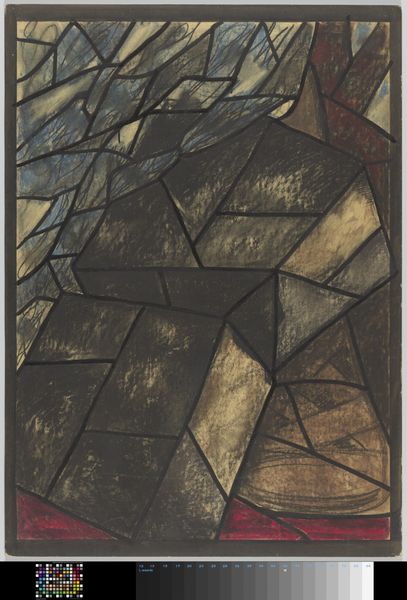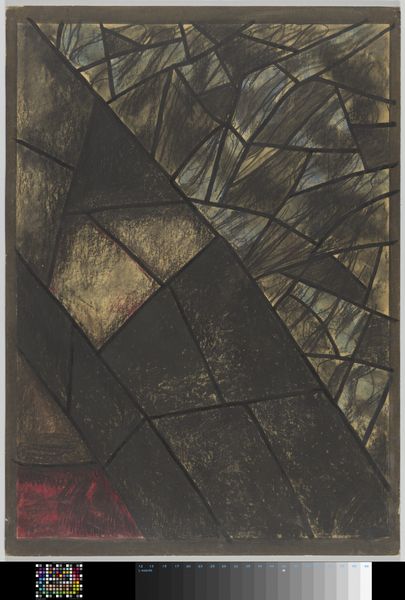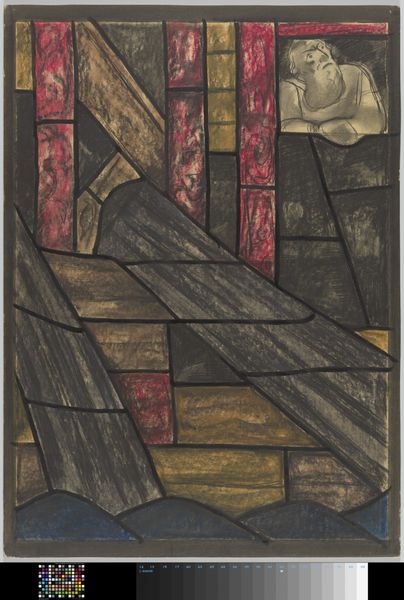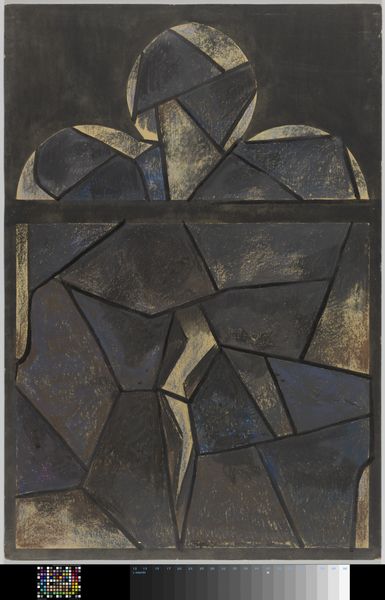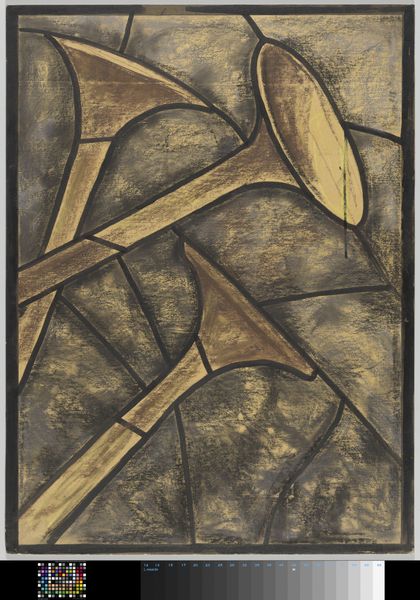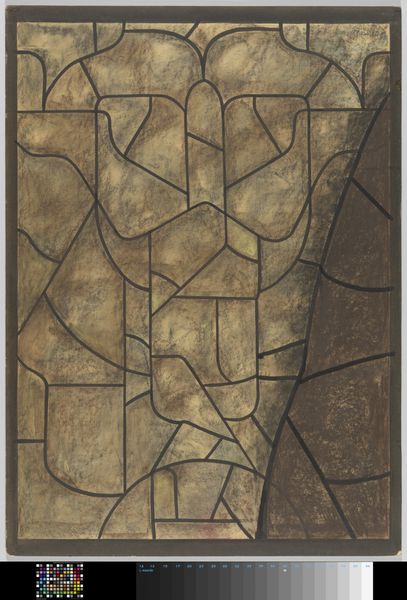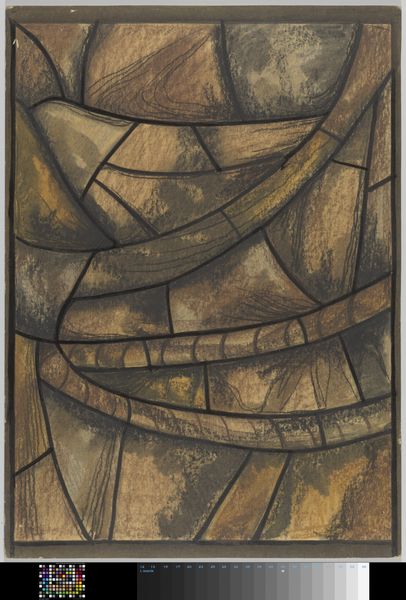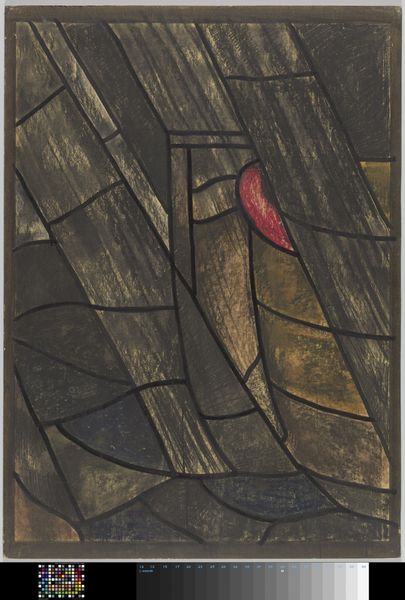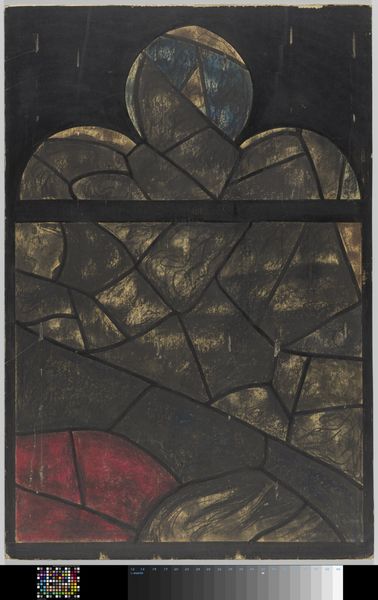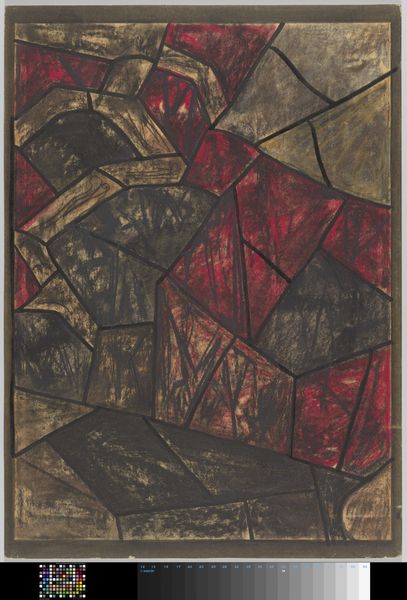
Ontwerp voor raam in het Noordertransept in de Dom te Utrecht c. 1934
0:00
0:00
mixed-media, painting
#
mixed-media
#
abstract painting
#
generative art
#
painting
#
textured
#
abstract
#
form
#
geometric-abstraction
#
line
#
mixed media
#
modernism
Dimensions: height 1125 mm, width 807 mm
Copyright: Rijks Museum: Open Domain
Curator: This is Richard Nicolaüs Roland Holst’s, “Ontwerp voor raam in het Noordertransept in de Dom te Utrecht,” a design for a window in the North transept of the Utrecht Cathedral, created around 1934. It is a mixed-media work, currently held in the Rijksmuseum collection. Editor: It’s brooding. The palette, almost entirely browns and blacks, gives it this heavy, somber feel. The fracturing, the sharp angles…it’s unsettling, like looking at something shattered and waiting to break further. Curator: Knowing it's a design for a stained-glass window, let’s consider the interplay of materiality and function. Roland Holst, quite conscious of production methods, likely chose these earth tones not only for aesthetic reasons, but also for the practical considerations of pigment availability and light diffusion in a massive cathedral space. How would these colors work when illuminated? Editor: That's the rub, isn't it? In a cathedral, light isn’t just light. It’s symbolic, deeply intertwined with religious and institutional power. Roland Holst was designing for a specific socio-political function. It's about representing something profound for public consumption, about mediating divine concepts for worshippers. Curator: I'd push back gently on that monolithic interpretation. It seems the design favors a highly stylized abstraction, nearly geometric in form. Notice the texture created via varied applications of media. He’s emphasizing formal concerns, not merely symbolic representation, even within the ecclesiastical setting. Editor: But the commission itself infuses the art with context. He's still operating within the institution of the church, which inevitably shapes the work's purpose and reception. How does that framework constrain or perhaps even embolden the artist's choices regarding materials and presentation? Curator: Ultimately, a work like this straddles different domains. Roland Holst is responding to the needs of his commissioner but, by employing materials with a focus on their intrinsic properties and their abstract potential, transcends mere functionality, entering into a realm of formal and aesthetic exploration. Editor: Exactly. By grappling with the push and pull of social expectation and creative freedom, we see the artist negotiating a role—both craftsman and visionary. Thanks for untangling all of that with me! Curator: My pleasure! Considering those relationships certainly clarifies a great deal about the image before us.
Comments
No comments
Be the first to comment and join the conversation on the ultimate creative platform.
